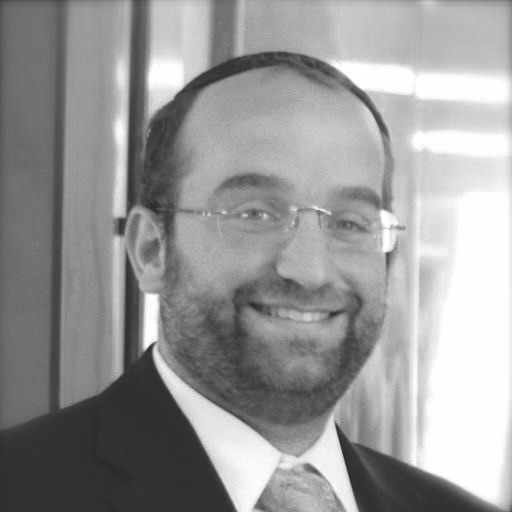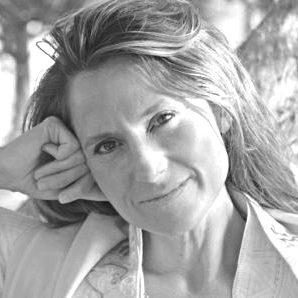 Screenshot from YouTube.
Screenshot from YouTube. PARSHA: ACHAREI-KEDOSHIM, LEVITICUS 19:1-2
And the LORD spoke unto Moses, saying: Speak unto all the congregation of the children of Israel, and say unto them: Ye shall be holy; for I the LORD your God am holy.
Rabbi Shlomo Einhorn
Yeshivat Yavneh

These verses reflect a slight deviation from the normal God-to-Moses, Moses-to-the-nation format. Usually it says, “Speak to the children of Israel and say to them ….” Here it says, “Speak to the entire assembly of the children of Israel and say to them….”
The Midrash explains that Torah normally was taught via the hierarchical methodology, from God to Moses to the people, but this Torah portion was transmitted to the entire group as a whole.
This approach seems to create an even bigger problem: If the hierarchy method was generally preferred, why abandon it now? And if the collective method was ideal, why wait until now?
Perhaps the answer is the von Restorff effect — also known as the “isolation effect” — which predicts that when multiple homogeneous stimuli are presented, the stimulus that differs from the rest is more likely to be remembered. The theory was coined by German psychiatrist and pediatrician Hedwig von Restorff (1906-62), who, in her 1933 study, found that when participants were presented with a list of categorically similar items with one distinctive, isolated item on the list, memory for the item was improved.
We can suggest that the hierarchy method was pedagogically most effective. However, in order to make the values of Kedoshim stand out, something uniquely different had to be done. Therefore, the method of instruction changed.
The question I leave for you to think about is why the von Restorff effect was needed for Kedoshim?
Rabbi Lori Shapiro
Open Temple

Kodesh. A word we will spend the rest of our lives trying to understand. Ramban quotes the rabbis: “[This] Torah portion was stated in an assembly because most of the fundamentals of the Torah are dependent on it.” Whatever Kodesh means, it connects to living in the midst of others. Ramban explains: “Wherever you find restriction of sexual immorality, you find holiness.”
These “immoralities” are aberrations of the Torah’s essence that we are created B’tzelem Elohim, in the image of God (aka The Creator). There is, ostensibly, an inextricable connection between our sexual expression and our deepest expression of our understanding of the Creator. What is the connection between our sexual self-expression and our spiritual health? In an age of rampant sexual dysfunction and prurient news headlines, is all of this a collective spiritual crisis?
Perhaps the dictum “You shall be holy; for I the Lord your God am holy” is a reminder of the mundane miracle born by our sexual appetites. We are like giants, creating small and wondrous acts of creation: children. Raising them, we approach the essence of God’s mystery and embody the God character in the Bible.
The examined life of parenting is a realm of radical amazement. The child discovers their own small joys and their place on this earth, and we are challenged to our deepest core. Perhaps Kedoshim is a call to reconcile the truth about our sexual appetites — they are portals for our holiness journey. Live them truthfully and (w)hol(l)y, or perish.
Rabbi Aryeh Markman
Aish LA

A human being is not a soul trapped in a body, rather a merging of the two. Each needs the other to reach upward toward their Creator. That pursuit creates holiness, which is our reason for being, to transcend this world and encounter God.
Make no mistake, we can never be as holy as God because we are trapped in time and space, which is God’s creation. He is Other, beyond and inconceivable. Since we are made by God, God has an intrinsic interest in us. You love what you make. Be it your song, your business, your child or your idea. God is no different. In fact, God re-creates us (and the universe) every nanosecond, so can you imagine how special we are in His eyes?
God wants us to relate to him, so he gives us three arenas to do so: time, space and ourselves.
Space being the Land of Israel, where his presence is most palpable and no other land compares. It contains the skylight to Heaven. Think Jacob’s ladder. Time being Shabbos and all the holidays. These are opportunities where closeness is at hand just because of the calendar day, which is programmed with spiritual gifts.
And, ultimately, it is us who use the mitzvot of the Torah and exert heroic human effort to transcend time and space in order to connect to the Creator. Holiness is our opportunity and a destination equally available to all of us. Use this world and find your Creator.
Sydni Adler
Student, Ziegler School of Rabbinic Studies, American Jewish University

When I hear the word “kadosh” or “holy,” I hear Ziony Zevit reminding my rabbinical school class once again that “sacred,” “holy” and “kadosh” all mean “separate.” To be holy is to be wholly unique.
When God asks the entire people of Israel to be holy, God is first asking us to delve into our particular abilities to do good in the world. In our parsha, God commands us to revere our parents, to keep Shabbat, to judge the other fairly, and a whole host of other moral and ritual commandments. However, God does not provide many details about how to fulfill these commandments. God leaves that to each individual’s own creativity, resources and ability. When God asks us to be holy, God is also asking us to commit to our communal uniqueness. By refraining from worshipping idols, by celebrating Shabbat, and by eating and cutting hair in certain ways, the people of Israel show our dedication to one another and to God.
Perhaps most importantly, taking on holiness brings us into a closer relationship with the Divine. By putting ourselves in spaces of individual and communal creativity, we better appreciate God’s successes and challenges in creating the world. As we simultaneously revel and struggle in our endeavors to keep mitzvot, we conceptualize God’s swinging emotions throughout the Torah. By learning from each other’s unique personalities and problem-solving abilities, the people Israel, God and we as individuals can come closer to a more perfect creation.
Rabbi Erez Sherman
Sinai Temple

Are we involved in holy work? Recently, I have had the good fortune of teaching Torah outside the walls of Sinai Temple. Our clergy have dispersed throughout greater Los Angeles, teaching Torah to our congregants in their offices over lunch.
We often think holiness must be confined to a sanctuary or synagogue building. Yet, Rabbi Yishmael and Rabbi Shimon bar Yochai engage in this exact talmudic debate. While Bar Yochai is under the impression that we must be in formal Torah study each moment of every day, Rabbi Yishmael lives in the real world — our worldly endeavors are, in fact, Torah study itself. We have the words of the Torah on our mouth each morning and night as we recite the Shema, a reminder to live a holy life.
As I learned this text first with a group of doctors, and then with a group of lawyers and business people, I was impressed to discover the underlying principle of this parsha as a thread through our sacred community. Well-established doctors, lawyers and business people, when asked if there were holy moments in their days, responded with a resounding “Yes!” The Lubavitcher Rebbe once said, “There is no evil in the world, just the absence of goodness.” One small act of holiness a day … just imagine how good and holy our world can be.





















 More news and opinions than at a Shabbat dinner, right in your inbox.
More news and opinions than at a Shabbat dinner, right in your inbox.